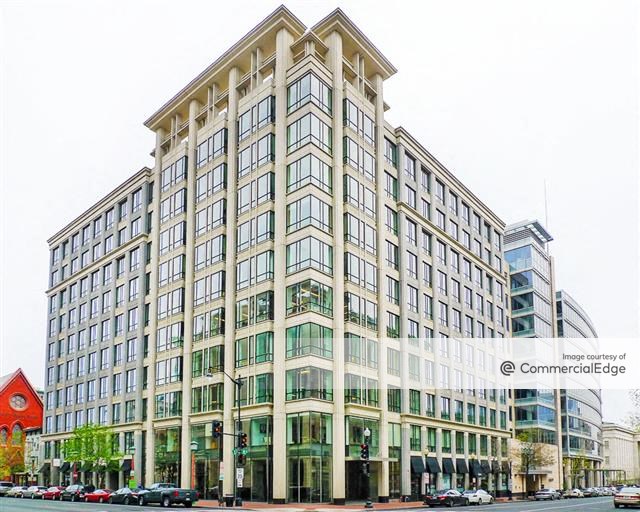MBA CREF Special Report: Economists See Slow Improvements, Slightly Higher Interest Rates
After the final day of the MBA CREF conference in Atlanta, the take-home message was that the U.S. economy will grow a bit in 2012, coupled with a rise in interest rates, while the volume of commercial property will continue to expand.
February 10, 2012
By Keat Foong, Executive Editor

At its Commercial Real Estate Finance/Multi-Family Housing Convention & Expo 2012 in Atlanta this week, the Mortgage Bankers Association forecasted that the economy will grow by a small amount in 2012 while interest rates will rise; the volume of commercial property will continue to expand; and there will likely be no loan-refinancing crisis as the volume of mortgage maturities continues to fall and composes a small proportion of outstanding loans.
MBA forecasts that real GDP growth will decrease from 2.7 percent at the end of 2011 to 1.8 percent in the first quarter and remain at 1.8 percent in the second and third quarters, before ending 2012 at 2.0 percent.
Speaking at a general session at the conference, Jay Brinkmann, MBA’s chief economist and senior vice president for research and education, said that the GDP increase to a 2.7 percent rate in the fourth quarter from 1.8 percent in the third quarter is partly a result of a large business-inventory buildup. Brinkmann said consumers are still exhibiting an unwillingness to make purchases, although corporations have increased their spending.
Brinkmann said there has been a trend of employment growth starting in spring 2010, but the employment increases have fallen far short of replacing jobs lost during the recession. He noted that employment actually contracted by 2.2 million jobs in January, and that the U6 unemployment rate, which takes into account discouraged workers not seeking employment, is actually 15.1 percent. MBA forecasts the official unemployment rate to fall marginally, from 8.6 percent this quarter to 8.5 percent in the second through fourth quarters.
Brinkmann expressed caution about the sovereign debt crisis in Europe, which he said is already in, or will experience, a recession this year. However, any Europe-wide recession may lead to a contraction, but not recession, in the United States.
The 10-year Treasury and the federal-funds rates will increase somewhat this year, Brinkmann predicted. Those who desire financing may want to consider locking in interest rates earlier rather than later, as Brinkmann projects that the 10-year Treasury yield will steadily notch up from 2.0 in the fourth quarter 2011 and first quarter 2012, to 2.5 percent by the end of the year. Brinkmann said he does not expect QE3 action by the Federal Reserve in 2012.
In its inaugural forecast of the finance markets, MBA projects an increase in commercial and multi-family originations of 17 percent in 2012. MBA said that the commercial and multi-family originations will hit $230 billion in 2012, and continue to rise to $290 billion in 2015. “Our forecast anticipates continued strength in lending by life companies and the GSEs, increased lending by banks and others, and a slow but steady return in CMBS activity,” Jamie Woodwell, MBA’s vice president of Commercial Real Estate Research said. “Low loan-maturity volumes over the next few years, coupled with moderate sales transaction activity, will mean that a relatively robust supply of mortgage capital will be a catalyst for deal activity.”
Speaking at the general session, Woodwell pointed out that overall commercial and multi-family originations increased by 64 percent between 2010 and 2011, and by 13 percent between the third quarters of 2010 and 2011. However, originations fell in the fourth quarter from the third quarter due to the European sovereign debt crisis In the spring and summer. Woodwell also noted MBA’s originations index hit record levels for life insurance companies in the second and third quarters of 2011, and for Fannie Mae and Freddie Mac in the fourth quarter. Compared to the same period in 2010, in the fourth quarter loans for banks increased by 122 percent, though from a low base, he said. CMBS financing, however, experienced a fall of 50 percent during that period.
Maturing non-bank loans will also decline between 2010 and 2014 before rising sharply to peak in 2016 and 2017, according to MBA. Woodwell said that $150.6 billion, or 10 percent of commercial and multi-family mortgages held by non-bank lenders and investors will mature this year, representing a 3 percent decline from the $154.7 billion that came due in 2011, and an 18 percent decline from 2010.
“MBA first conducted this survey in 2008 in response to concerns that there was a wave of commercial mortgage maturities that would swamp the market. That survey, and each one since, has shown that the volume of commercial and multi-family mortgages maturing each year represents only a small portion of the commercial mortgage universe,” Woodwell said.
Eleven percent of CMBS loans, worth $72 billion, will see the end of their terms in 2012. Woodwell said the amount of CMBS mortgage expirations will likewise decline in 2013 and 2014. MBA survey was based on $1.46 trillion of non-bank loans. Banks and thrifts hold an additional $793 billion in mortgages that are not covered in the survey, according to MBA.







You must be logged in to post a comment.